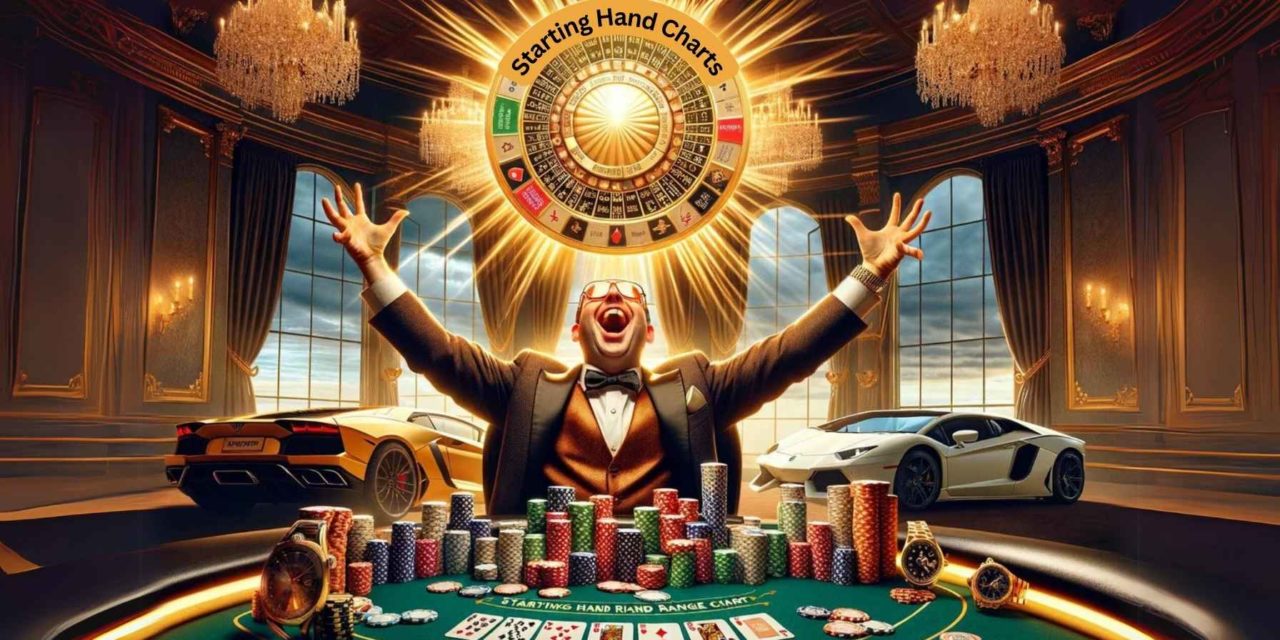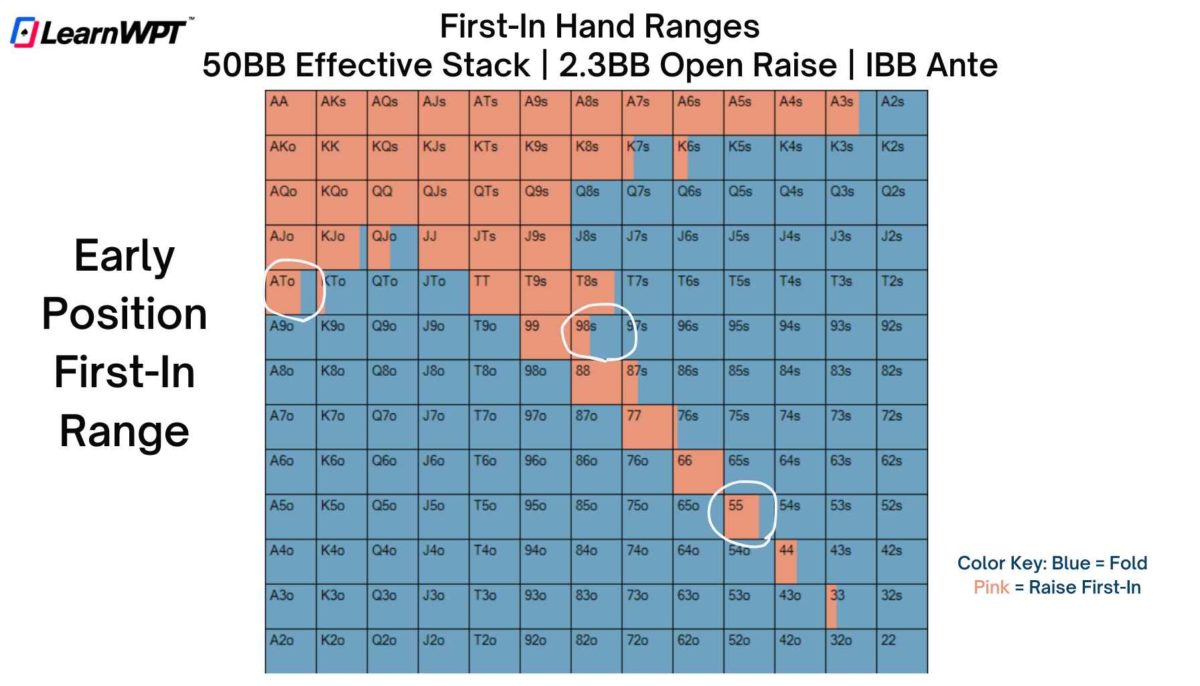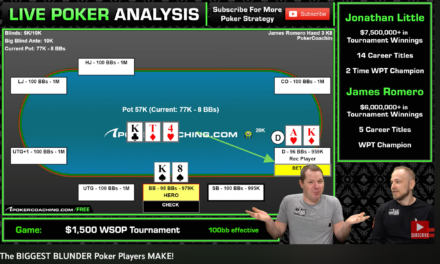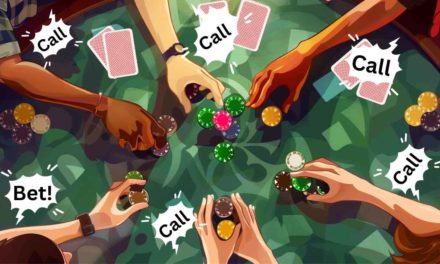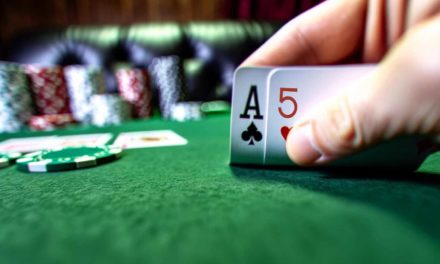
Exploitative Play: Be Curious
If you’re anything like me, your journey into serious tournament poker likely started with a search for basic, fundamental knowledge. The first thing most serious players grab hold of is some starting hand range charts. For an engineering type like myself, it felt like unlocking the holy grail of poker.
After all, once I know what hands to play, surely poker looks something like this:

Step 1: Play the correct starting hands from the charts.
Step 2: ???
Step 3: Profit!!
Once I figure out that pesky step 2, it’s nothing but Lambhorginis and Rolexes for me!
Hyperbole aside, one of the key things I said in part one of this series is that “It’s important to love the process.” When we start playing poker, having basic rules to keep us out of trouble is important, and learning starting hand charts is a great way to begin that process.
As you grow and learn, it’s important to embrace the words of one of my favorite coaches of all time, Ted Lasso, and always “be curious.”
Let’s look at first-in hand ranges as an example of how we can be curious and implement that in exploitative play.
If we look at an early position Game Theory Optimal (GTO) first-in opening hand range chart above, one of the first things that might stick out is that some hands are raised only some of the time and folded the rest. For example, hands like 98s, 55, and ATo.
Why would we only raise a hand some of the time? Surely, it’s either good enough to raise or it isn’t. If we dig further, we find out the Expected Value (EV) of the hand is zero! Why would we raise with a hand to win zero chips, on average?
Definition: The Expected Value of a poker decision can be positive (+EV), negative (-EV), or neutral (0 EV):
- A positive EV (+EV) indicates that the action is expected to be profitable in the long run. Making +EV decisions consistently is crucial for successful poker play, as it means you’re likely to win money over time.
- A negative EV (-EV) suggests that the action is expected to lose money over the long run. Avoiding -EV decisions is essential, as they would lead to losses if repeated in similar situations.
- Neutral EV (0 EV) means the action neither gains nor loses money on average. It’s a break-even decision.
The Non-Curious Player
The non-curious player would look at the charts, assume the computer did the work for them, and follow along. Not us, though; if we dig further and were to remove all the hands that are mixed (i.e., the hands in the GTO chart that can either fold or raise first-in) and have 0 EV from our opening range and re-ran the simulations with our range locked, what we would find is that the EV for opening our entire range, on average, went down!
Rethinking Mixed Hands and Overall EV
If we think about it, part of the reason we make money with hands like AA is that our opponents must also believe that sometimes, we will have ATo, 55, or K6s. If we can never have these hands, our opponents can more easily fold against us, and our big hands make less money! Surely, this means we should just play those hands 100% of the time, though, then our Aces will make even more money.
So we re-run the simulations now, playing all the mixed hands 100% of the time. When the simulations are done, we again find that the EV for opening our entire range goes down again!
Looking more closely, our EV for hands like AA goes up slightly, but all of our hands on the fringe drop in value. This is a combination of our range getting wide enough that we have to fold too frequently to 3-bets behind us and our weaker overall range having a much tougher time realizing its equity post-flop against the relentless computer pressure when we are frequently out of position post-flop.
The GTO is Just a Starting Point
“So great, Eric, what you’re telling me is just to play the GTO ranges?!?”
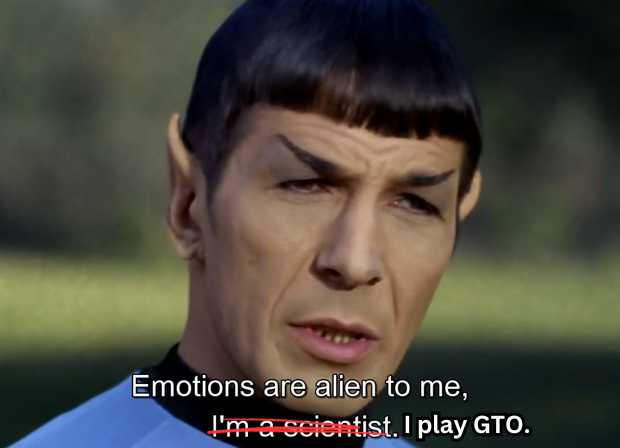
Not at all! I’m saying that they make a great starting point, and it’s important always to stay curious and ask questions about the “why” and “why not” so we can adjust appropriately.
Exploitative Play: Adjusting to Your Opponents
What if we sat down at the World Series of Poker Main Event tomorrow, and it was filled with a table full of satellite players there for the once-in-a-lifetime experience? Do you think those players will likely punish our weaker ranges by constantly 3-betting us and floating us in position post-flop? If the answer is no, then not only can we play those mixed hands 100% of the time, but we can probably play some other hands just outside our normal range profitably!
Alternatively, if we play in a nightly tournament on a cruise ship after the drinks have been heavily flowing, do we need to play weaker hands to get significant action the times we have aces? While we probably shouldn’t shut completely down, keeping our range wide isn’t necessary to profit on the bigger hands in our range against a group that is likely unaware of what our range actually looks like and is more likely interested in having fun and gambling it up!
This is the beauty of exploitative play.
We can start with a solid, fundamental GTO baseline strategy and then adjust it to the players and table conditions present to improve our win rate. In the case of our preflop ranges, instead of them being these rigid, fenced-in ranges that we always play the same, they will be like living, breathing organisms that will expand when our opponents aren’t punishing us for playing too many hands and contract when they’re being a bit overzealous themselves.
The Importance of Staying Curious
I will give more concrete examples of how to make these adjustments in future installments of this series. For now, I wanted to give a relatable example of how, as long as we always love the process and stay curious, we’ll have a framework for recognizing how to deviate from standard lines profitably.
Remember, in the world of poker, exploiting your opponents is not just okay; it’s your ace in the hole.
Until the next deal,
Eric “Rizen” Lynch
To see Rizen PXF videos, go to the PXF Training Center. Eric is an instructor at LearnWPT where he answers questions in their Ask a Pro service, runs live workshops, and hosts live seminars!
To be alerted to future editions to this series, sign up for the free PXF Newletter!


